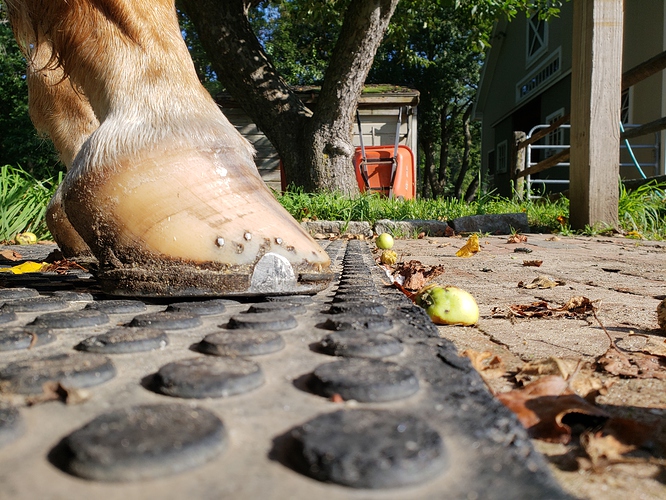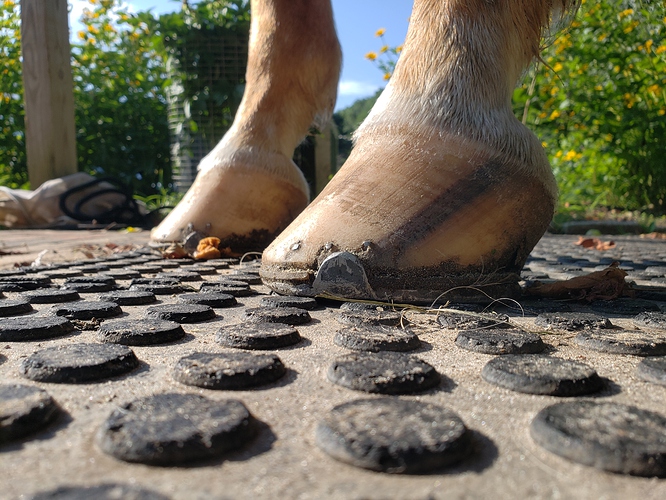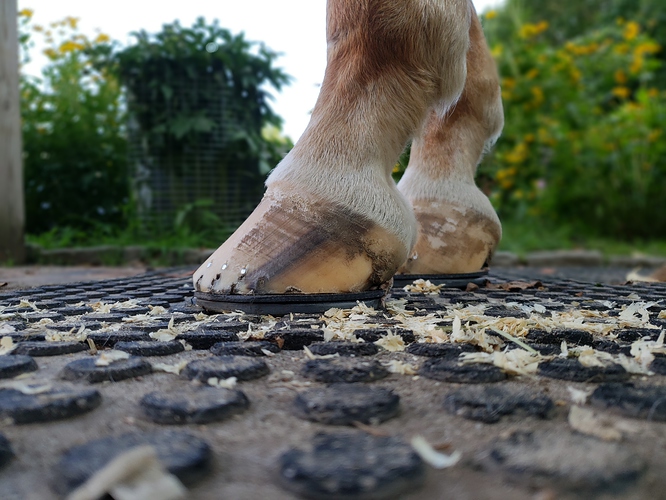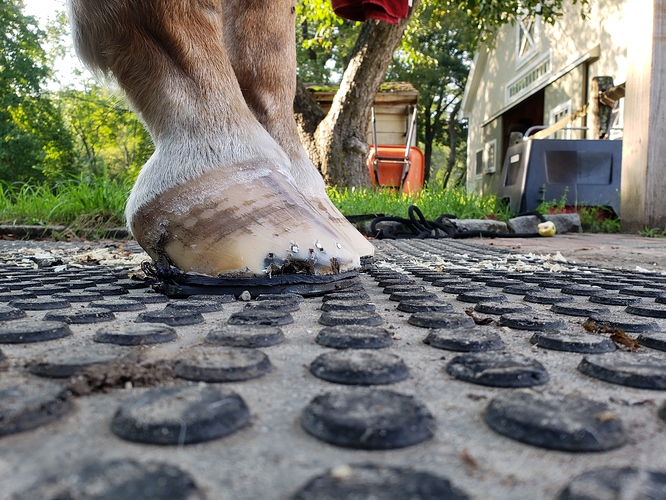Short version: I’ve seen Ground Control shoes, and a few others made of composites or polyurethane, and claim to be good for horses with heel pain. Just wondering if anyone here has used them, and what other options are available.
Long version: So I had a thread 3 years ago about my mare being lame in the LF due to possible navicular. She had Osphos, which helped a little, but ultimately switching to a new farrier was the thing that helped the most. She’s been shod all around with pads up front for years but with changing her hoof balance, getting her heels not contracted and increasing her shoe size from 00 to “almost 1”, and using different pads, we had a couple of good years.
Now she’s off on the RF, which is her “special hoof.” There are signs of (very) old laminitis on Xrays, the hoof has a tendency to flare, and that’s the one we will see problems with if she gets second cut instead of first cut hay. The leg above it has poor conformation – offset knee and a big splint that was there when I bought her 13 years ago.
A nerve block test done on Monday was definitive for heel pain. She’s had another round of Osphos but it’s too early to tell if it helps.
She is due to be shod in 2 weeks, and has had a lot of toe growth the last few cycles. Besides changing her trim… I am thinking about other types/materials of horse shoes. She’s had wedges long ago and I remember some problems developing because of too much toe pressure. She’s had pour-in pads in the past, which also made things worse. This horse grows hoof and sole like a champ.




